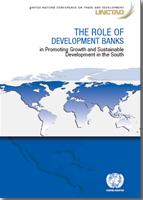
In an era of excess global liquidity and savings on the one hand, and an acute shortage of financing for development on the other, this report argues that development banks at all levels — national, regional, multilateral — can play a critical bridging role between savings and financing needs and thereby contribute significantly towards the achievement of the Sustainable Development Goals.
Unlike commercial financial institutions, geared towards short-term projects and returns, development banks are by design providers of long-term finance. Their funding is predominantly in the form of long-term liabilities, they have technical expertise to take a leading role in the design and execution of development projects and they have the financial means to attract other players to co-financing. Historically, they have played such a role regarding early as well as late industrializers. In future, they should continue to be a key feature in the development finance landscape.
The time is ripe to promote development banks
At the national level, the global financial crisis in 2008 has opened space for national policymakers to selectively break with the Washington Consensus policy package and an opportunity to support pro-development finance initiatives.
At the regional and South-South levels, there is a new momentum of initiatives for the creation of Southern banks, which could tap into global savings, especially those that originate in the South. Taking advantage of such opportunities is fundamental to supporting future development in the South.
About this report
This report first details the rationale for national development banks and developing country experiences with such banks in the past. It then discusses regional and subregional banks, which can play a critical role, especially in supporting smaller countries that may face greater obstacles in setting up development banks at the national level. Finally, it discusses the recently created Southern banks, both regional and cross-regional.
The report concludes by noting that the new development banks are greatly needed and should not be seen as a threat to long-established international financial institutions. In fact, they have already started operations in collaboration with established institutions, as new partners for development. In the process, they are helping to form a strong network of development banks in which different institutions collaborate with each other through co-financing but also in various other forms, creating important synergies and achieving, collectively, greater effectiveness.


